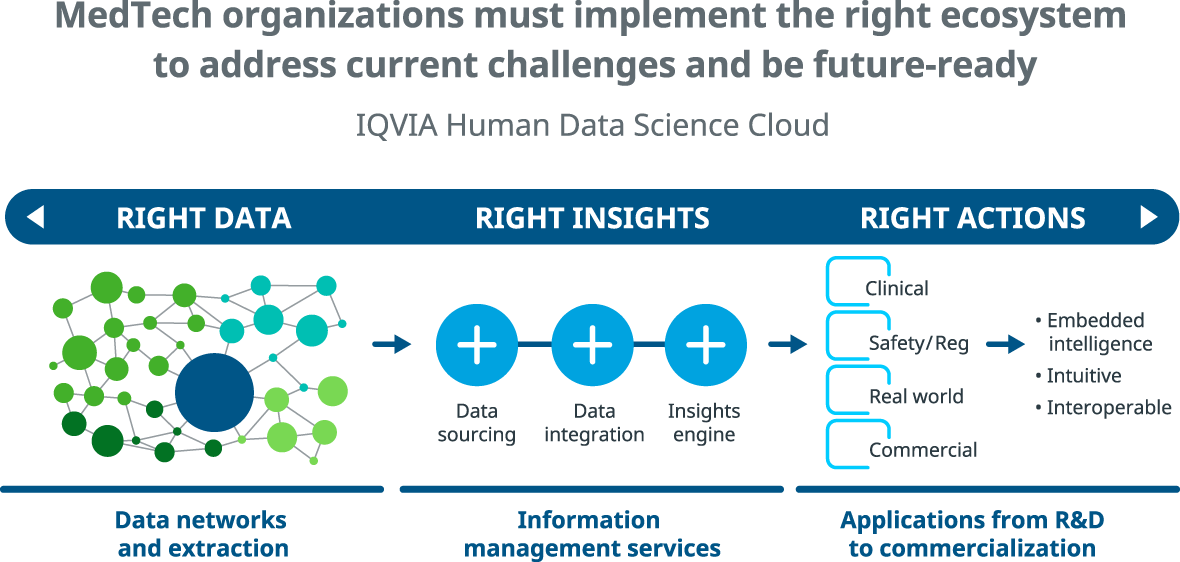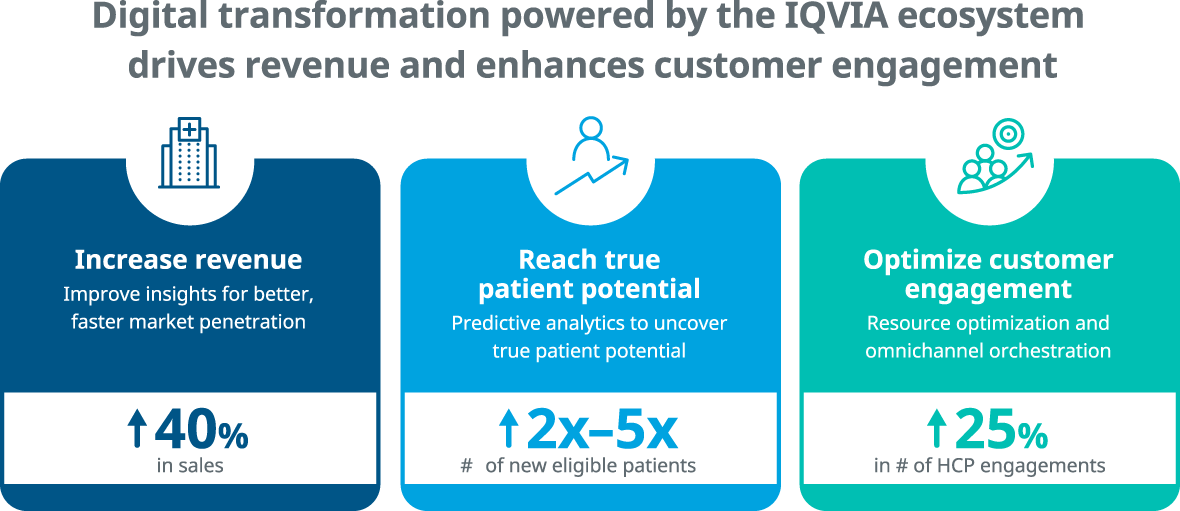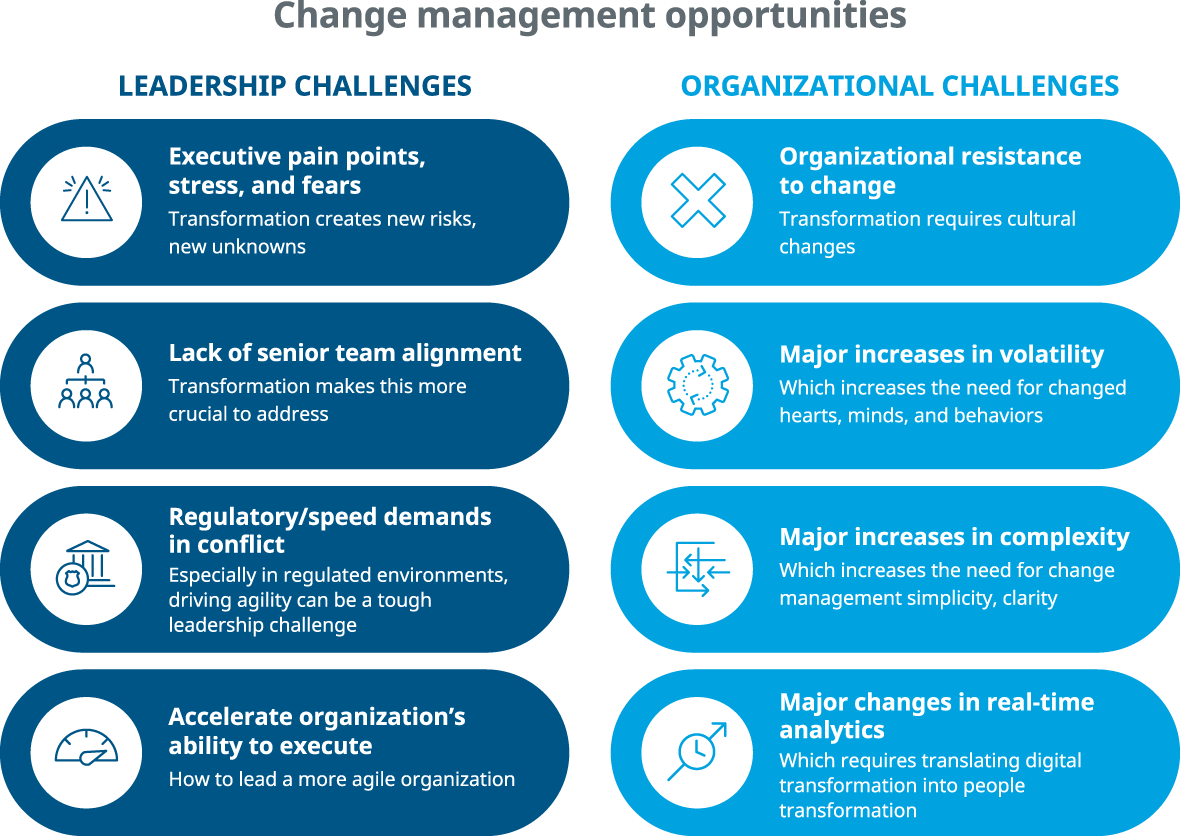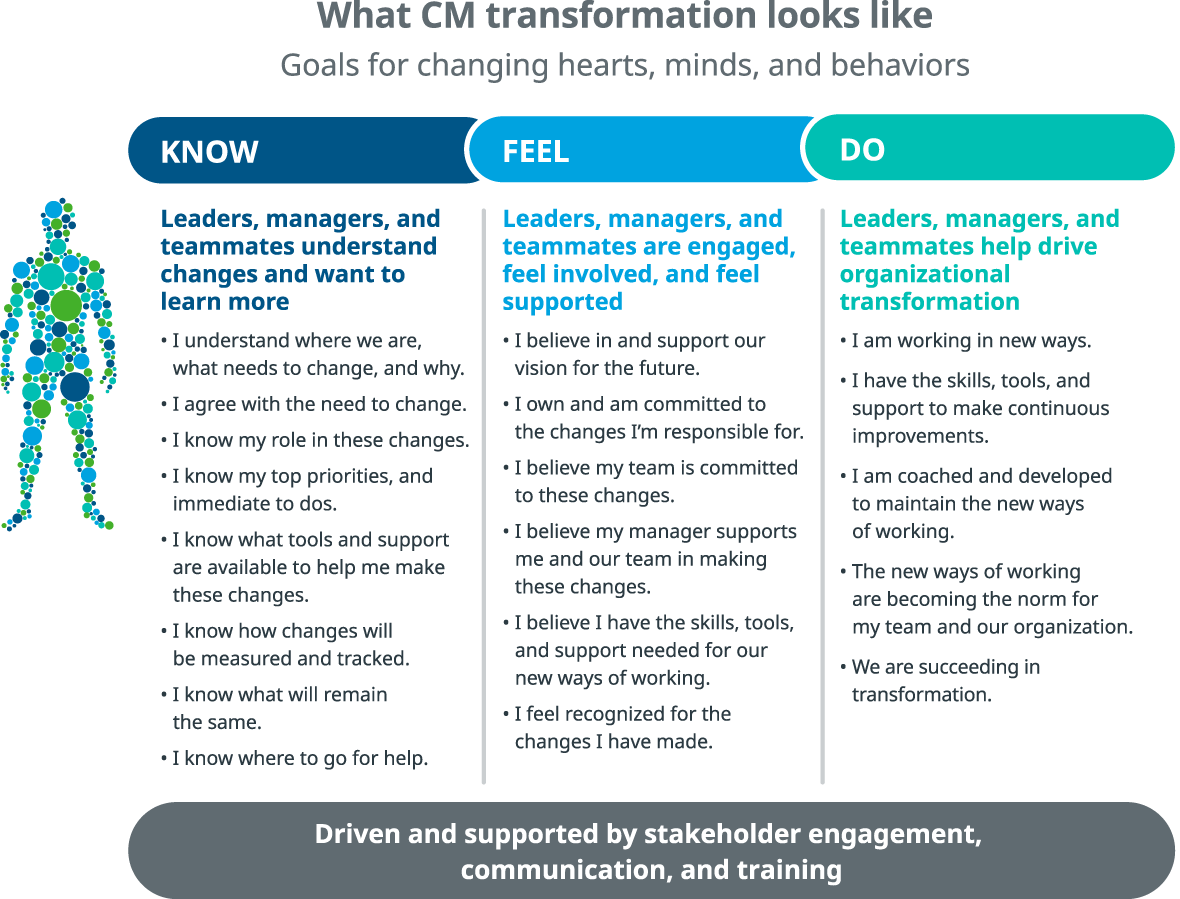Data, AI, and expertise empower Commercial Solutions to optimize strategy, accelerate market access, and maximize brand performance.
















- Locations
- United States
- US Blogs
- The Importance of Change Management in MedTechs Data and Digital Transformation Journey
Changing market dynamics and the influx of data are driving the importance of building integrated data management infrastructures for MedTech companies to not only drive data integration, aggregation, and analysis, but to ensure systems are tightly integrated to support the timeliest access to data and insights.
The goal: To create that single source of truth; a modular, interoperable commercial data ecosystem within the organization that facilitates data streaming and, as a result, becomes focused, personalized, more patient-centric, and drives better customer engagement and commercial efficiencies.
Key building components underlying this evolution and transformation can sound overwhelming at times, but can be broken down into clear steps, needs, and a roadmap that achieves internal efficiencies and progress for MedTech organizations at any level. These include:
- Right data (data networks, sources, and extraction).
- Right insights (information management services including data sourcing, cleansing, warehousing, master data management, data integration, building an insights engine).
- Right actions (embedded intelligence completes the intuitive and interoperable data ecosystem that drives applications and actions from R&D to commercialization).

We have seen impactful results when applying a structured approach with data management and stewardship at its foundation.

However, there is a far greater challenge along this journey in change management (CM). CM can result in project failure as it is hard to structure and often underestimated (or not considered at all). To overcome this hurdle, MedTech organizations need to focus on the human factor of change and achieve top-down alignment, buy-in, accountability, and clear communication along the way. If not addressed right at the beginning and considered a core element of the data and technology transformation strategy, investments may not yield the desired returns.
Disruption and volatility are the new norm in our industry, driven by technology and market shifts. Highly regulated industries, like MedTech, resist change, yet we know that agility rules the markets. Risks of not changing outweigh the risks of changing.
According to CM experts WalkMe1, in general:
- 47% of organizations that integrate CM are more likely to meet their objectives than the other 30% that did not incorporate it.
- Only 34% of change initiatives succeed.
- One in three CEOs failed to achieve the desired outcome from past transformation initiatives.
To achieve success, CM needs to be viewed as a critical component underlying the successful design and implementation of a new technology-enabled, data ecosystem, not a side conversation. Otherwise, you risk poor success, limited adoption, and ultimately an unsatisfactory ROI.
Never has CM been so crucial in every implementation plan. The need to translate digital transformation into people transformation ramps up daily. Some of those pain points along the transformation reinforcing the need for change management may include the following:

Here are some quick tips to start thinking about to incorporate CM into your transformation efforts:
- It’s never too early. CM helps to examine and frame customer needs from a people perspective. Since it impacts every dimension of a project, it’s important to bring CM into projects as quickly as possible.
- Never underestimate people issues. Most challenges in difficult projects are not process-, budget-, or tech-related. They primarily revolve around whether people are embracing and adopting the changes.
- Know. Feel. Do. Know, Feel, Do is a simple change communication model that must be followed because it’s driven from the user’s/audience’s perspective.
Know: Simplify each change down to the one most important thing everyone must think about, understand, or discuss.
Feel: Always engage people’s hearts, not just their minds. The biggest change successes (or failures) are based on whether each individual emotionally buys into changes and sees a clear WIIFM (What’s in it for me?) for themselves, their team, or their customer/end-user.
Do. Each complicated, difficult change effort must be broken down into clear, easy-to-understand, quickly actionable “to do’s” that are directly tied to the project’s overall goals and the reasons for the changes.

There are many other change models and tools, but the reason we are focusing on the above is to emphasize one thing: empathy. While there are many dimensions to change efforts, the most powerful of all is our ability to put ourselves in the shoes of the people who will be executing those changes. Walk a mile in their shoes before you begin any change effort — that’s the best guarantee of success!
References:
- "Change Management Statistics You Need to Know in 2023 (walkme.com)". WalkMe, accessed in June 2023.

Contact us for more information
Related solutions
We empower life sciences with connected intelligence, transforming data into actionable insights for smarter decisions and better patient outcomes.
Our Real-World Evidence offerings turn diverse healthcare data into actionable insights, empowering confident decisions and better patient outcomes.
Leapfrog the competition by proving the value of your products




